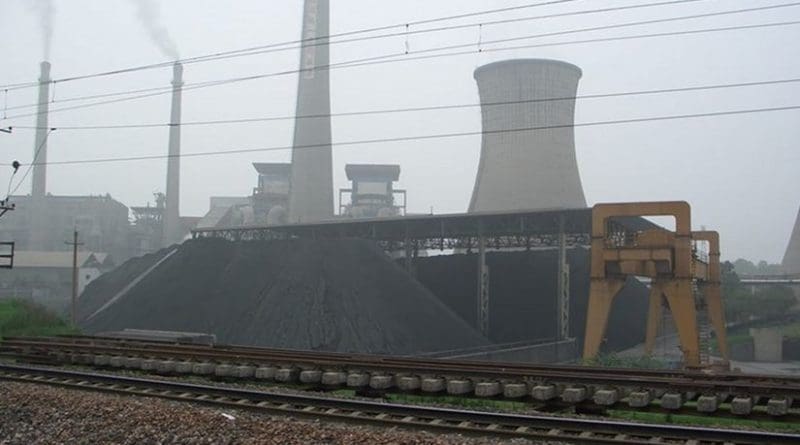Coal’s Comeback Killing Hopes Of Climate Change Reversal – OpEd
By Arab News
By Ranvir S. Nayar*
The report released last week by the Intergovernmental Panel on Climate Change (IPCC) was not the first time that alarm bells had been rung by scientists about how little was being done by governments, companies and societies to address this urgent issue. The report reinforced what many environmental activists have believed for a long time, especially since the “historic” Paris Agreement of December 2015, which was hailed as a ground-breaking moment in mankind’s resolve to minimize its footprint on the environment.
The Paris Agreement saw various nations setting their own targets for reducing carbon emissions, or Nationally Determined Contributions, which may be a start, but they are hardly good enough, as the meeting could not agree on any mechanism for policing the implementation of these targets. Nor were any principles laid down to tackle countries that don’t respect their commitments. This key element was left for subsequent annual conferences, with hopes that the meeting in Bonn — Cop23 in 2017 — would see the writing of a rule book to govern the implementation of national commitments.
However, three years later, as we move toward yet another UN Climate Change Conference, this time Cop24 in Katowice, Poland, in December, there is little agreement on the rule book and many, perhaps more serious, disagreements have emerged. The climate change battle received its first major setback in mid-2017, when US President Donald Trump announced the withdrawal of the world’s largest economy from the Paris Agreement. In one stroke, Trump undermined decades of work, as the US had always been the least keen on any global pact to curb emissions and accountability for its actions. Thus, when Barack Obama had signed on at Paris in 2015, it was hailed as a major achievement.
Aside from that, Trump also reversed another of his predecessor’s policies — on promoting renewable energy and reducing dependence on coal, which is the biggest contributor to global pollution and carbon emissions. Trump aggressively supports the coal industry in the US, promising subsidies and other government support to revive the economy in the country’s coal mining regions.
In protecting coal, the US is the principal but not the only culprit. Australia, another big coal producer and exporter, has defied the IPCC report of last week and said it will continue to use and exploit its coal reserves. India, one of the biggest consumers, is also less than keen on coal reduction, as are some European nations, notably Germany and Poland — the former for its energy needs as it has decided to phase out nuclear power plants, and the latter as a major coal producer and consumer.
The situation is hardly better with the other big fossil fuel: Crude oil. Both producers and consumers have gone slow on replacing petroleum with other, greener options for energy production. After some promising gains in energy efficiency, as well as a reduction in the consumption of fossil fuels for three years in a row, 2017 saw a significant reversal and energy-related carbon emissions reached a new high of 32.5 gigatons. This ensured a total growth of 2 percent in global carbon emissions, which also stood at a record high, thus putting a huge question mark on the reality of the Paris Agreement and indeed on the capacity and willingness of mankind to reduce carbon emissions.
The world has been trying to address climate change since the 1992 UN Framework Convention for Climate Change (UNFCCC). However, 26 years later, there is very little to show in terms of real achievements in curbing man-made climate change. There have been numerous conferences and meetings, each followed by a very “historic” declaration, but very little progress on the ground, as carbon emissions globally continue to rise.
Yes, the EU has managed to cut its emissions by about 22 percent from 1990 levels, but it is more an island than anything else, as emissions in most other large economies continue to rise or be at levels that could prove catastrophic for the planet. With the return of coal, even Europe may struggle to meet its future, more ambitious target of cutting emissions by 40 percent from 1990 levels by 2030.
A major challenge at Katowice will be the division between developed and developing economies, known as as Annex I and Annex II countries, respectively. Under UNFCCC rules, Annex I countries are obliged to meet their targets for emission reductions but, for Annex II nations, these rules are more flexible, as well as less demanding. There was a good reason for putting this distinction in place. Annex I countries have been happily emitting billions of tons of carbon for more than 150 years, while for several large developing nations, including China and India, the real emissions began hardly two or three decades ago.
The developing economies reject mandatory curbs on their emissions, pointing, very justifiably, at their extremely feeble per capita emission, even today. For instance, India’s per capita emission in 2016 stood at 1.92 tons a year, while for the US the figure was 15.56 tons. The Indian government has repeatedly said that, while it would like to curb its total emissions, the large difference in population sizes, as well as the gap in development between the countries, cannot be ignored. Hence India has so far rejected the notion of a national cap on emissions without taking into account these two key parameters.
As the world’s leaders prepare to assemble again in Katowice, they should be prepared for yet another meeting that sees more differences than uniting factors on display, making any real progress toward climate change reversal a mere dream.
* Ranvir S. Nayar is managing editor of Media India Group, a global platform based in Europe and India, which encompasses publishing, communication, and consultation services.

